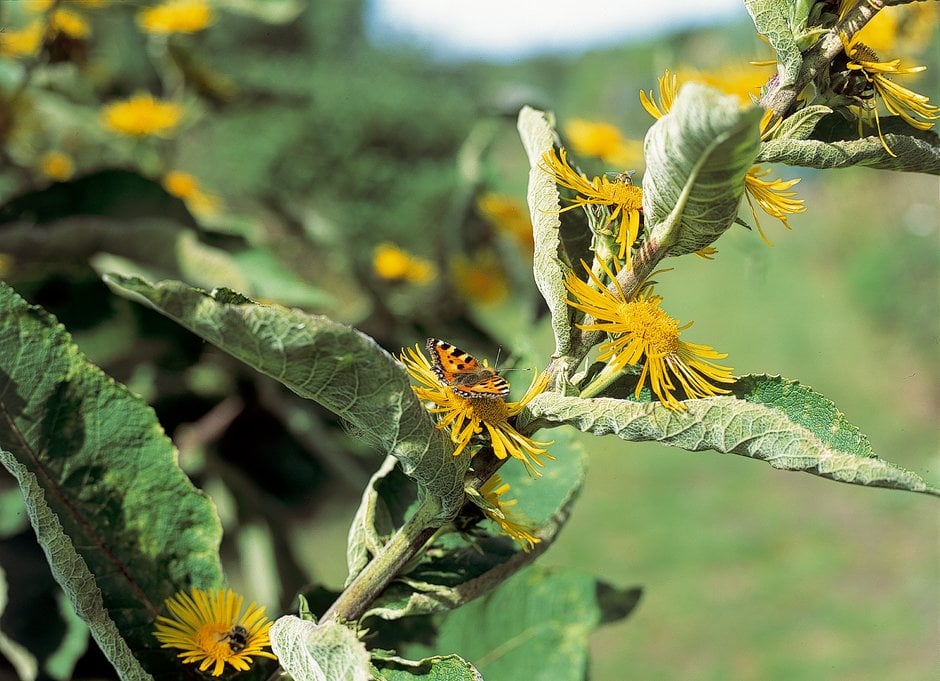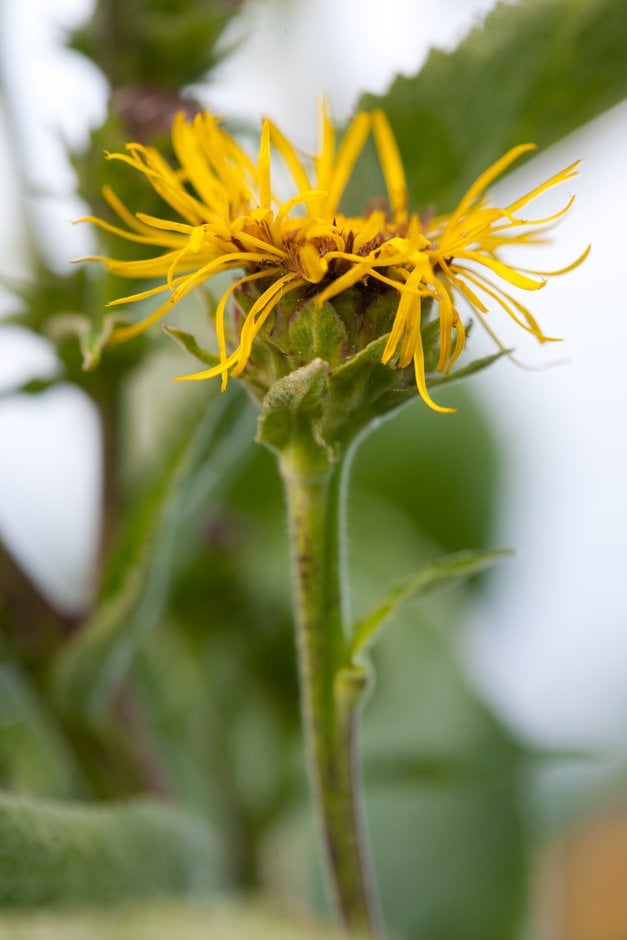Inula racemosa
Indian elecampane
A clump-forming, deciduous perennial to 2.5m tall. Sturdy, purple-flushed stems bear elliptic, toothed leaves to 30cm long and, in summer, yellow flowerheads up to 6cm across
Size
Ultimate height
1.5–2.5 metresTime to ultimate height
2–5 yearsUltimate spread
0.5–1 metresGrowing conditions
Moisture
Moist but well–drained, Poorly–drainedpH
Acid, Alkaline, NeutralColour & scent
| Stem | Flower | Foliage | Fruit | |
| Spring | Green | |||
|---|---|---|---|---|
| Summer | Yellow | Green | ||
| Autumn | Green | |||
| Winter |
Position
- Full sun
- Partial shade
Aspect
South–facing or West–facing or East–facing
Exposure
Exposed or Sheltered Hardiness
H6Botanical details
- Family
- Asteraceae
- Native to GB / Ireland
- No
- Foliage
- Deciduous
- Habit
- Bushy
- Genus
Inula may be annuals, herbaceous perennials or sub-shrubs, moslty with large basal leaves and daisy-like yellow flower-heads, often with narrow ray-florets
- Name status
Correct
- Plant range
- Afghanistan to China
How to grow
Cultivation
Grow in a deep, fertile, moisture-retentive soil in full sun or partial shade. May require support, see staking perennials
Propagation
Propagate by seed or by division
Suggested planting locations and garden types
- Cottage and informal garden
- Wildlife gardens
- Wildflower meadow
- Flower borders and beds
Pruning
Cut back old stems and foliage as the plant dies back for the winter
Pests
Generally pest-free
Diseases
Powdery mildews may be a problem in conditions that are too dry
Love gardening
Sign up to receive regular gardening tips, inspiration, offers and more
View our Privacy Policy
Get involved
The Royal Horticultural Society is the UK’s leading gardening charity. We aim to enrich everyone’s life through plants, and make the UK a greener and more beautiful place.

